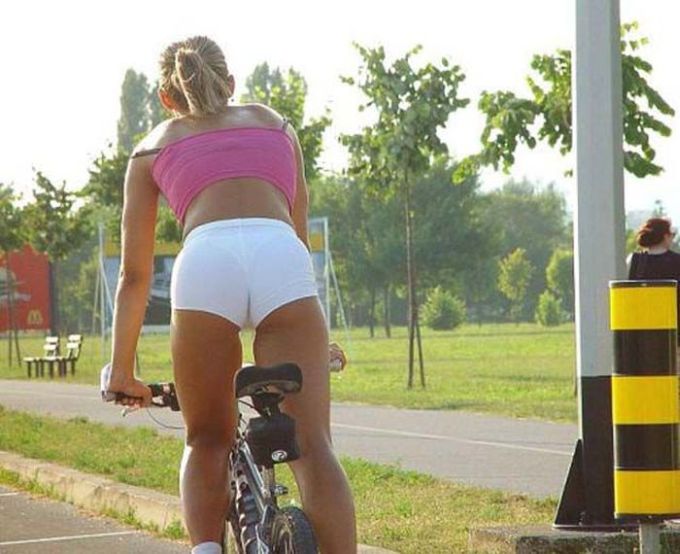|
|
Bicycle Girl
|
The handlebars turn the fork and the front wheel via the stem, which rotates within the headset. Three styles of handlebar are common. Upright handlebars, the norm in Europe and elsewhere until the 1970s, curve gently back toward the rider, offering a natural grip and comfortable upright position. Drop handlebars "drop" as they curve forward and down, offering the cyclist best braking power from a more aerodynamic "crouched" position, as well as more upright positions in which the hands grip the brake lever mounts, the forward curves, or the upper flat sections for increasingly upright postures. Mountain bikes generally feature a 'straight handlebar' or 'riser bar' with varying degrees of sweep backwards and centimeters rise upwards, as well as wider widths which can provide better handling due to increased leverage against the wheel.
Saddles also vary with rider preference, from the cushioned ones favored by short-distance riders to narrower saddles which allow more room for leg swings. Comfort depends on riding position. With comfort bikes and hybrids, cyclists sit high over the seat, their weight directed down onto the saddle, such that a wider and more cushioned saddle is preferable. For racing bikes where the rider is bent over, weight is more evenly distributed between the handlebars and saddle, the hips are flexed, and a narrower and harder saddle is more efficient. Differing saddle designs exist for male and female cyclists, accommodating the genders' differing anatomies, although bikes typically are sold with saddles most appropriate for men.
A recumbent bicycle has a reclined chair-like seat that some riders find more comfortable than a saddle, especially riders who suffer from certain types of seat, back, neck, shoulder, or wrist pain. Recumbent bicycles may have either under-seat or over-seat steering.
|
|









